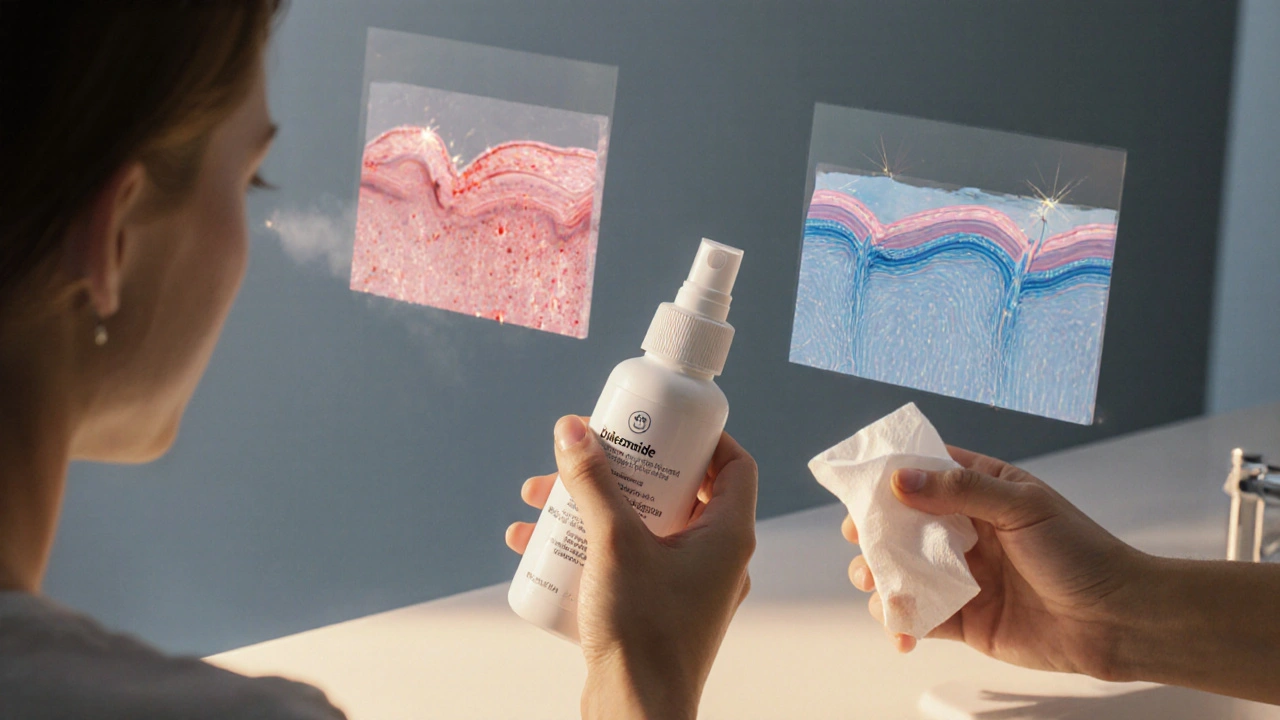Budesonide: What You Need to Know
Ever wondered why doctors keep prescribing Budesonide for asthma, allergies, or gut inflammation? It’s a steroid, but not the kind that makes you feel jittery. Instead, it calms inflammation right where it starts, whether that’s in your lungs, nose, or intestines. Below you’ll get the basics, the practical bits, and a few safety pointers you can actually use today.
How Budesonide Works
Budesonide belongs to a group called inhaled corticosteroids. Think of it as a fire extinguisher for swollen tissues. When you inhale it, the powder or mist lands on the airway walls and tells immune cells to chill out. The same principle applies when you use a nasal spray – it soothes the lining of the nose and cuts down on drip and congestion. If you take a pill or a rectal foam, the drug travels through the gut and reduces the inflammation that triggers ulcerative colitis or Crohn’s flare‑ups.
Because Budesonide acts locally, only a tiny amount ends up in the bloodstream. That’s why side‑effects are usually milder than with oral steroids like prednisone. Still, you might notice a sore throat, hoarse voice, or a bit of thrush if you don’t rinse your mouth after inhaling.
Common Uses and Safety Tips
In the clinic, Budesonide shows up in three main forms:
- Inhaler (e.g., Pulmicort): Daily use for asthma control. Most people take two puffs once or twice a day, but your doctor will set the exact dose.
- Nasal spray (e.g., Rhinocort): One or two sprays per nostril, usually once a day, to keep allergies at bay.
- Oral/rectal forms: Capsules or foam for inflammatory bowel disease. These are taken with food and may be split into multiple doses.
Here are a few practical tips to get the most benefit:
- Always shake the inhaler and prime it if you haven’t used it in a while.
- After each inhaled dose, rinse your mouth with water and spit it out. This simple step cuts down on thrush.
- Store nasal spray upside down; it helps the medication spray evenly.
- Don’t skip doses even if you feel fine. Consistency is key to keeping inflammation down.
- If you miss a dose, take it as soon as you remember – unless it’s almost time for the next one. Then just skip the missed one.
Most side‑effects are mild, but watch for signs of a more serious problem: sudden wheezing that won’t improve, severe sore throat that lasts weeks, or unexpected weight gain. If any of these pop up, call your doctor.
Because Budesonide can lower your immune response a bit, keep an eye on infections. A common cold is usually fine, but if you develop a fever that sticks around or a persistent cough, let your healthcare provider know.
Finally, remember that Budesonide isn’t a rescue inhaler. If you have an asthma attack, you still need a fast‑acting bronchodilator like albuterol. Budesonide works behind the scenes to prevent attacks, not to stop them in the moment.
Bottom line: Budesonide is a versatile, targeted steroid that helps control inflammation in the lungs, nose, and gut. Use it as directed, rinse after inhaling, and stay in touch with your doctor for dose adjustments. With these simple steps, you’ll get the relief you need without the drama of stronger steroids.
Rhinocort (Budesonide) vs Top Nasal Allergy Sprays: Detailed Comparison
A detailed side‑by‑side look at Rhinocort (budesonide) versus other nasal allergy sprays, covering efficacy, cost, dosing, and safety to help you pick the best option.
